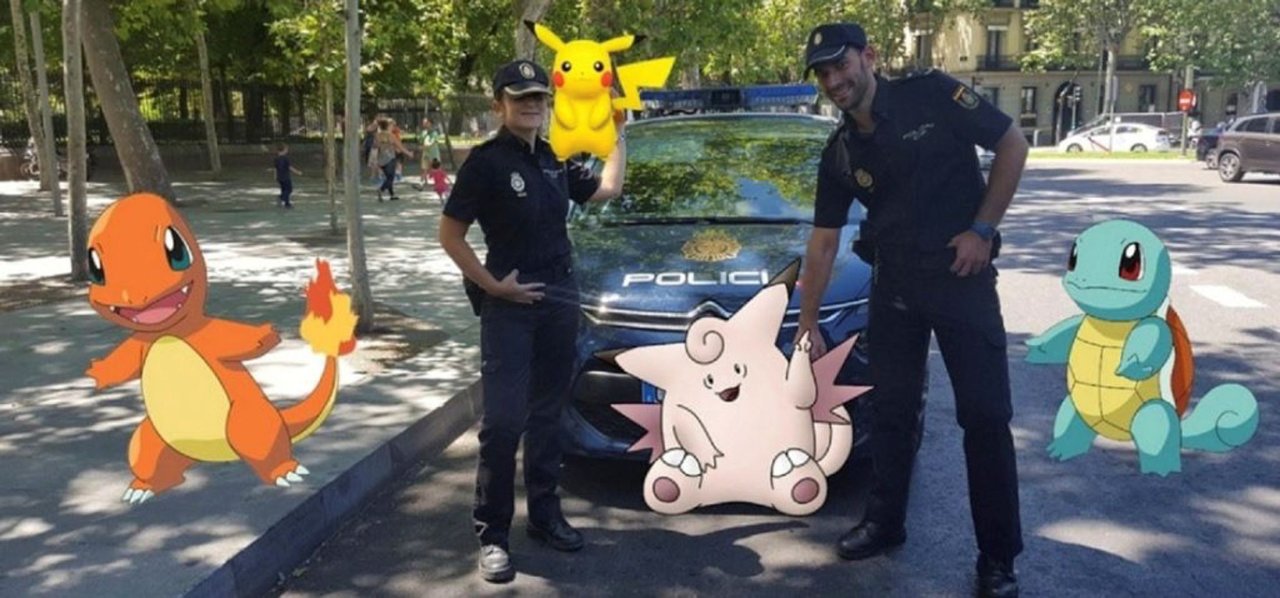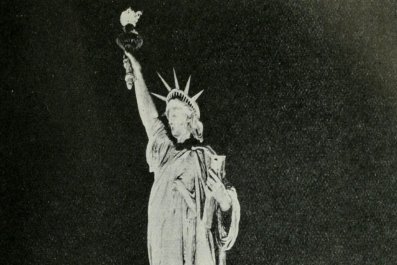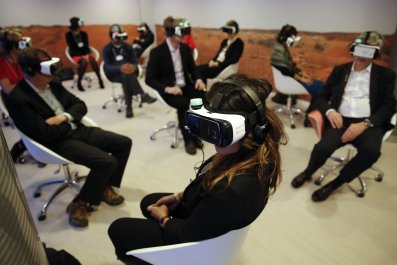The summer of 2016 has been hot and evil. Each week there comes a new hashtag, bringing doom like a blast of stale air from an oncoming subway train: #Brussels, #Istanbul, #AltonSterling, #PhilandoCastile, #BatonRouge, #FalconHeights, #Dallas, #Nice. #BlueLivesMatter, #BlackLivesMatter, #BrownLivesMatter, #AllLivesMatter. The acts of killing are not connected, except that they suggest a collective unmooring. It has become an act of courage to turn on the evening news. The sane are tuning out. The rich are fleeing to the countryside, as they always do during a pestilence.
In early July, though, there was relief, arriving like a temperate spell after a heat wave. It came from San Francisco, the site from which the most grandiloquent crazes tend to emanate: the Gold Rush, the semiconductor revolution, hoodies as professional attire. This one came from a developer of smartphone games called Niantic. The game it released, in this summer of madness, is called Pokémon Go.
You have probably heard of Pokémon Go. At this point, it would take an act of extreme determination—misplaced determination, I am going to argue—to have not heard of Pokémon Go. It is more likely that you have not only heard of Pokémon Go but are, in fact, one of its estimated 9.55 million daily players in these barely-holding-our-shit-together United States of ours. Some put the number much higher. Looking at the people passing me on the streets of New York City, their fingers tapping too furiously on smartphones screens for Facebook updates, I suspect the higher estimates are the correct ones.
I am not going to dwell very long on the particulars of the game (which Niantic developed in concert with Nintendo and the Pokémon Company). Basically, your Pokémon character captures other Pokémon creatures, primarily by tossing balls at them. You can battle with other players, and you can buy various accoutrements within the game, which is how its developers make money. The game itself is free. All you need to play is a smartphone.
I am being purposefully reductive, for which, please excuse me. Because we both know that if Pokémon Go were just another phone game whose primary audience were either tech-savvy Japanese tweens or bored American middle managers, it might get an amused front-of-the-book write-up in Wired, but not much more than that. There would not be roadside signs advising people not to play while driving on the freeway. There would not be a soldier posting an image of himself capturing a Squirtle in Iraq, where the fight against ISIS had momentarily been displaced by a more pleasant chase. There would not be hordes in Times Square and Golden Gate Park, gathering like the diasporic members of the Pokémon tribe reconstituted at glorious last.
Pokémon Go's advantage over just about all its predecessors is that it uses augmented reality, so that the landscape you see on your screen is borrowed from/informed by the real world, as understood by your phone's mapping and positioning capacities, as well as its camera. To play Pokémon Go is to enter a world that is kind of like ours, except with brighter color and clear objectives and not a superdelegate in sight. You are tethered to your screen, but the screen is drawing you out into the physical world, which has suddenly been populated by strange but not especially frightening creatures. Playing the game while walking through Brooklyn's Prospect Park, I had the feeling that I was traipsing through an enchanted forest, waiting for a creature to pop out from behind bushes where, on a usual morning, you might only see a squirrel sifting through the weekend's trash.
To augment is to add but also to improve. Breast-augmentation surgery is, as far as I know, always a process of enlargement. So is the augmentation of Pokémon Go. Unlike similar games, it does not ask us to retreat fully from the real world and enter, for hours at a time, the kingdom of Zelda or some other make-believe world which, in the end, could never rival the one we have to eventually re-enter. Second Life may have hundreds of thousands of players, but there is something ineffably sad about sequestering yourself in order to live a life on-screen that's not all that different than the one you'd be living off-screen if you dared unplug.
The genius of Pokémon Go is that it asks you to go out into the real world so that you can accomplish the game's fake-world goals. At one point, my gameplay consisted of simply walking down Vanderbilt Avenue. It is a stretch of brownstone Brooklyn I'd like to think I know well, yet I was surprised to see what had been highlighted as PokéStops, like the mural for a probably long-gone establishment called Rose of Sharon.
Searching for PokéStops and Pokémon "gyms" and other features of the game has brought people outdoors, giving them a reason to explore the places they live. People have made friends and, as far as I can tell from Twitter, fallen in love. There have been meet-ups of thousands in San Francisco and Chicago. One user on Reddit suggested that every player on Pokémon Go should pick up trash as a means of clearing the entire Earth of litter. Read enough about the aspirations invested in this seemingly simple game, and such starry-eyed talk no longer sounds insane.
It's true, Pokémon Go features some cartoonish violence, as well as selfishness and competition: It's hard to think of a game, digital or otherwise, that doesn't. But these qualities are attenuated by the essential silliness of the game, which skillfully blends the real and the pretend in a way nobody has before. Frankly, I have a hard time faulting anyone who prefers a reality augmented by Bulbasaur and Charmander to the one lacking augmentation but populated by monsters who are immune to PokéBalls.
The suggestion that the Pokémon Go craze is powered by nostalgia is credible, if not entirely convincing. The franchise was introduced in the United States in 1998, when we were grappling with many of the same issues we're grappling with today: intolerance (the murder of Matthew Shepard in Laramie, Wyoming), terror (Al-Qaeda bombings at American embassies in East Africa) and political scandal (Bill and Monica and her blue dress). If mid-1990s nostalgia were so strong, we'd all be listening to Third Eye Blind and watching Full House reboots.
Some have been angered because Pokémon Go players have intruded on sacred ground: Auschwitz, Arlington National Ceremony, the waterfalls at Ground Zero. I get the outrage, but I don't share it. To the contrary, I think that nothing deserves augmentation like the bewildering horrors of the past. Politicians and revolutionaries and messiahs have had their chance; let's see what happens when little creatures from Japan rule the world.
Inevitably, there will be Pokémon Go played on the site of a shooting or bombing. Some will call that desecration, and they will have a point. But there will be another point, about the human imagination, its Houdini-like resilience, its desire to take a sad song and make it better. It is unlikely that Pokémon Go will save the world, if only because the truly wicked still use BlackBerrys and are thus immune to the game's charms. It could tweak reality—it already has, in fact, which is why millions have flocked to the game, why serious publications like The New York Times have written scores of articles about it, why nearly everything I have read about the game is touched not by outrage but by wonder, by a desire for more augmentation, not less.
When you open the Pokémon Go app, you are reminded to "be alert at all times" and "[s]tay aware of your surroundings." This point is illustrated by a picture of a young man walking over a stone bridge. Engrossed by the Poké-hunt on his phone, he doesn't see the dragon rising out of the water, seemingly ready to devour him. I am not worried for our distracted friend, though. He has Pokémon on his side.






















